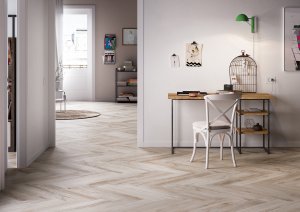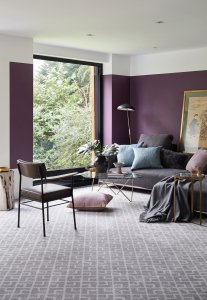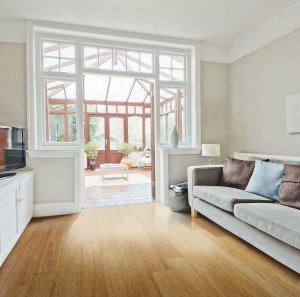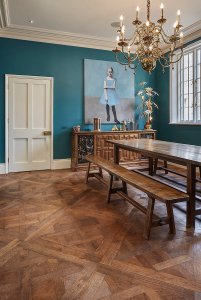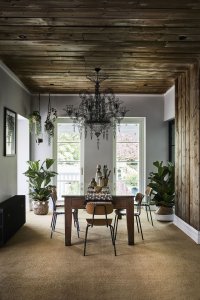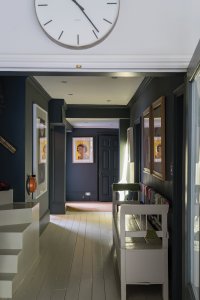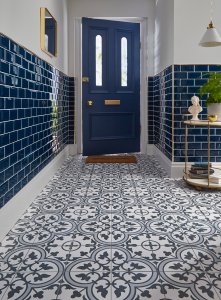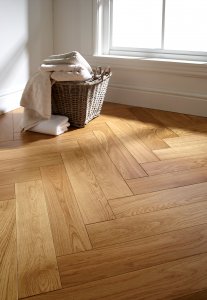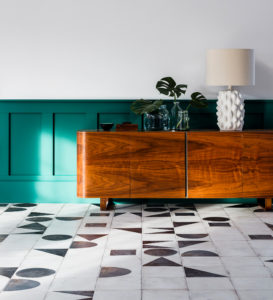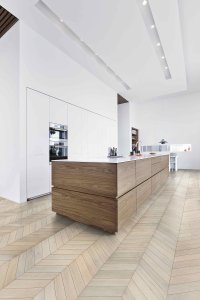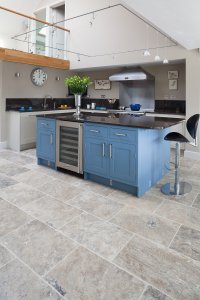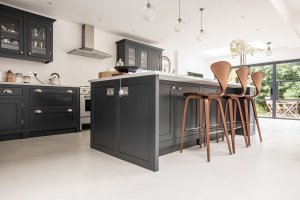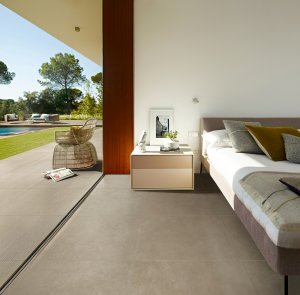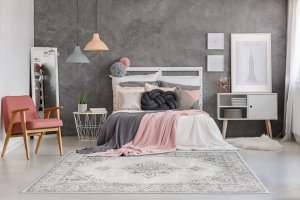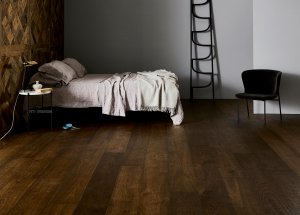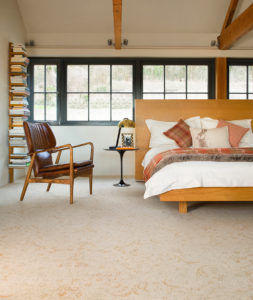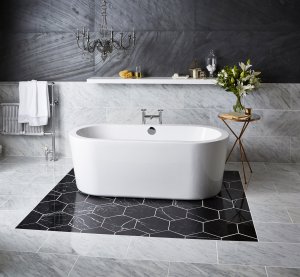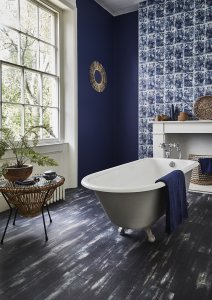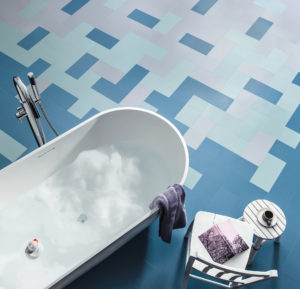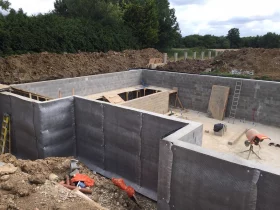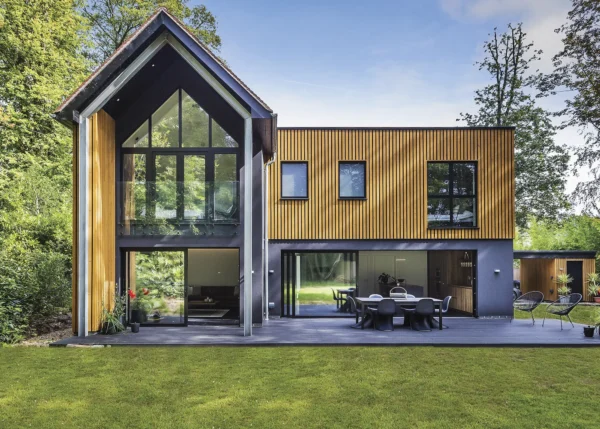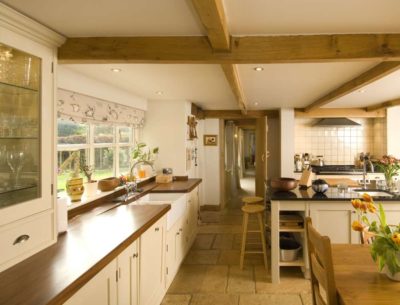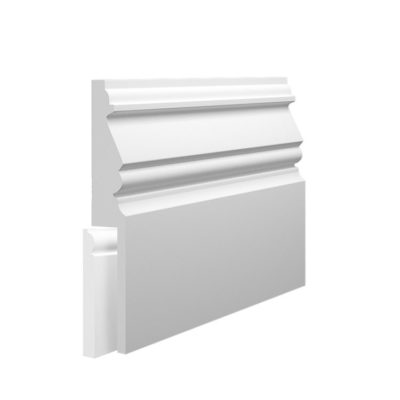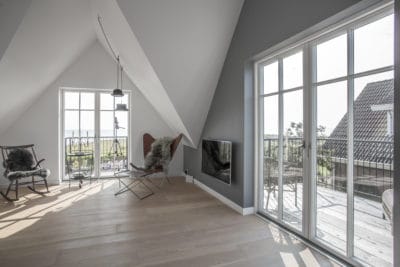Complete Guide to Flooring For Your Home
From the natural beauty and character of wood through to the soft and cosy allure of carpet, there are many choices for the flooring in our homes.
When considering what type is best for each space, think about how much that area will
be used and how low-maintenance you’d like the zone to be.
We naturally associate certain types of flooring with specific rooms, but modern manufacturing techniques offer a great range of versatility, with some products even mimicking the look and characteristics of others.
Below we unveil the key considerations for different rooms, some expert insight into the main contenders and inspiring examples to get your creative juices flowing.
In this article:
FLOORING OPTIONS BY ROOM
Hallway Flooring Options
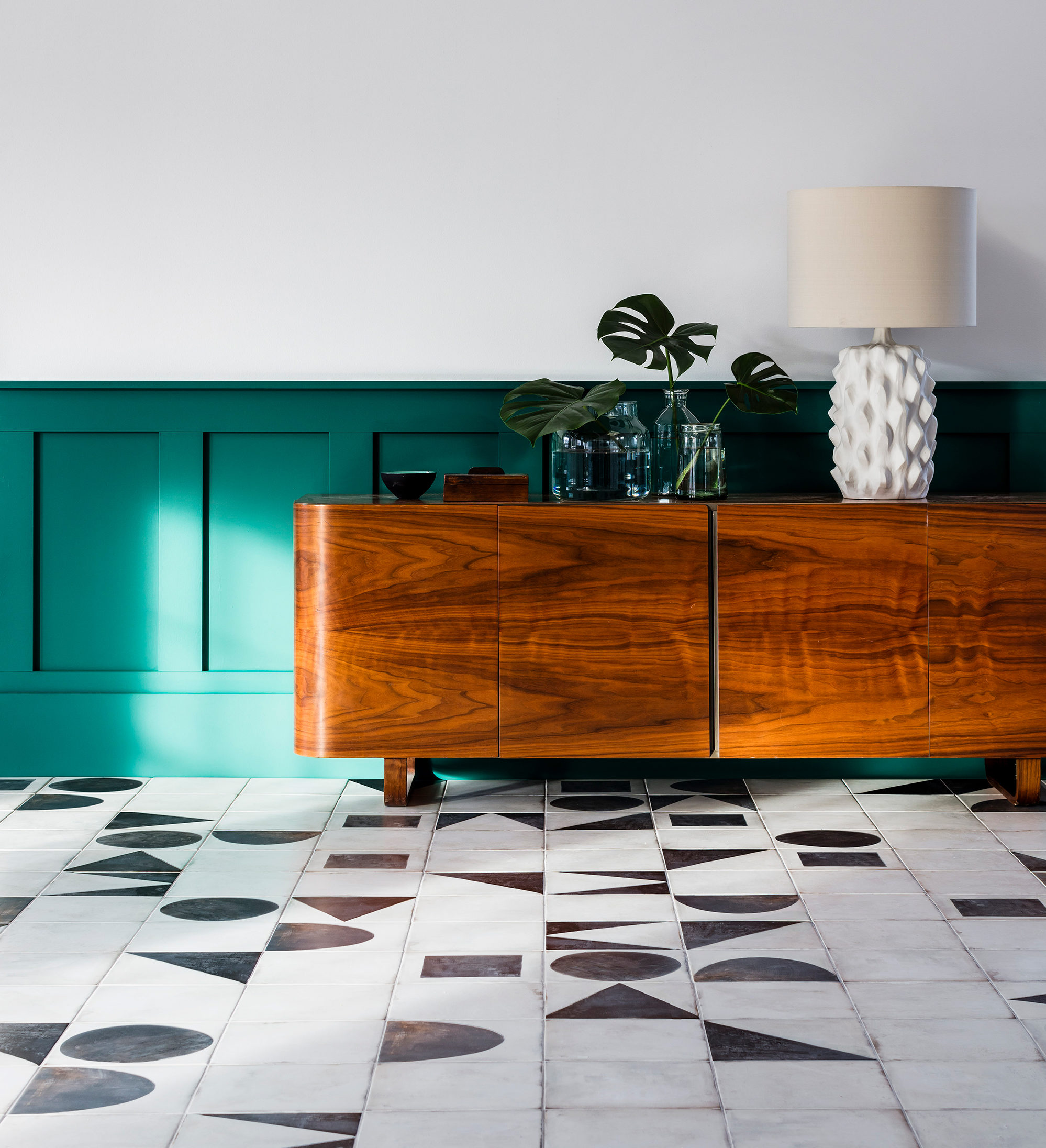
Monochrome Decor Porcelain, £38.61 per m2, from Mandarin Stone
This is the zone that’s nearly always going to get the most footfall in your home, so the flooring needs to be hardwearing and low-maintenance.
It’s the first space that guests will see, so it needs to work to set the tone for the rest of the house.
Patterned porcelain and ceramic tiles will offer a traditional allure – go for a black and white chequerboard for a classic period look.
Alternatively, painted floorboards are another option that allows for some creativity; a popular solution is to use the same hue on the staircase and accompany with a carpet runner.
Consider solid or engineered bamboo flooring from the likes of Moso Bamboo Surfaces Shop for its good durability or poured concrete for an ultra-modern look.
Flooring for living & dining areas
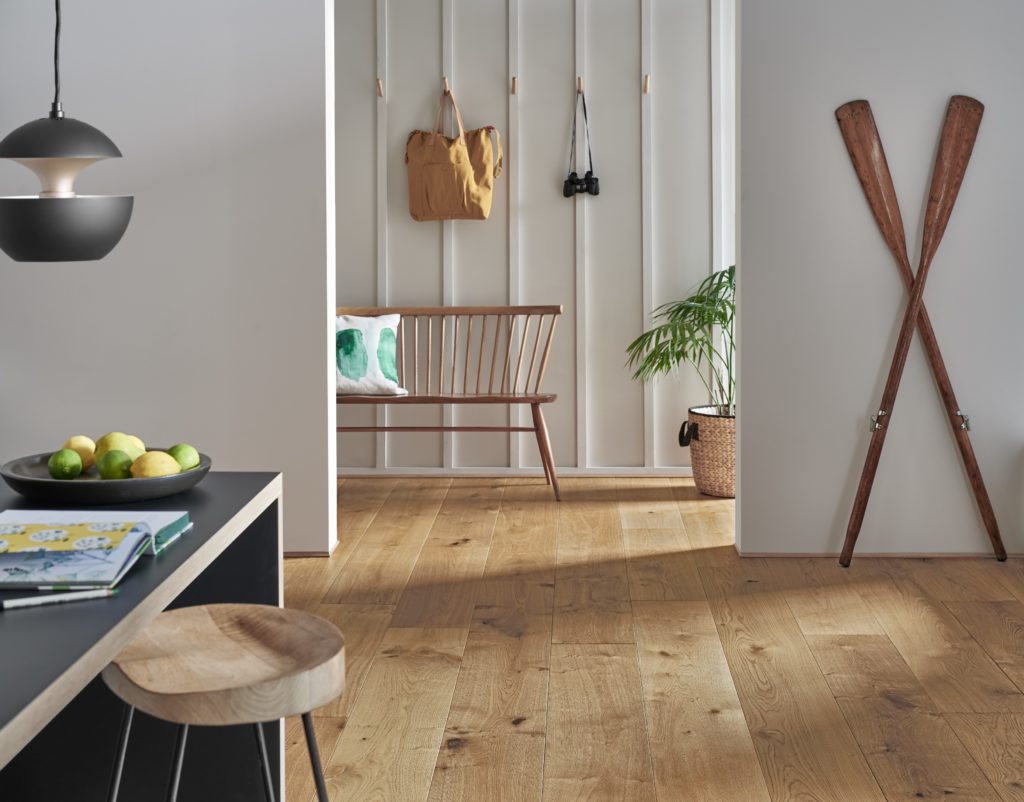
Chepstow Washed Oak Engineered Wood Flooring (240mm) from Woodpecker Flooring, £120 per square metre
The living room is one of the most used areas in the home, a versatile place that needs to cater for relaxing and entertaining, so your choice of flooring should be both practical and hardwearing.
Carpet and wood are the most common choices, with the latter often zoned using rugs to offer a softer feel for bare feet.
Bear in mind that solid wood tends to have a higher price tag and requires more maintenance than the alternatives.
Engineered wood is more durable and can be used alongside underfloor heating. Luxury vinyl tiles are an option that can offer the look of wood without the same expense.
Kitchen flooring
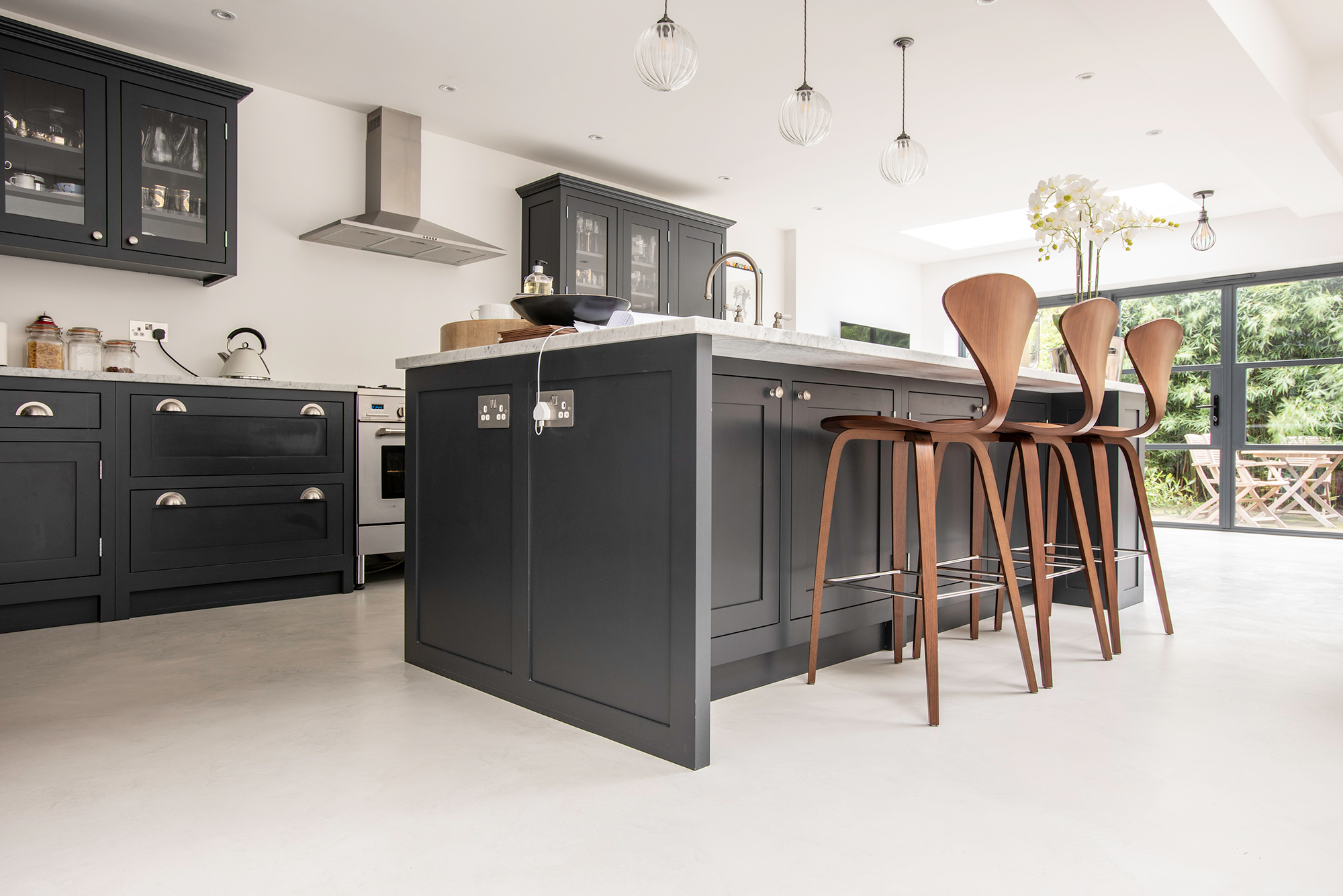
This kitchen features poured resin floor by The Resin Floor Company
Known as the heart of the home for a reason, the kitchen receives high footfall in repetitive areas, and the chance of food spillage calls for durable and low-maintenance flooring.
This makes properly sealed stone and porcelain tiles great choices. Wood is another option, but look for a hard-wearing engineered design.
If you’re updating the whole kitchen, choose your cabinets at the same time as the flooring to ensure an aesthetically-pleasing look.
Also consider having the same surface throughout the ground floor – perfect for open-plan kitchen-living-dining areas.
Read More: Kitchen Flooring Ideas
Bathroom floors
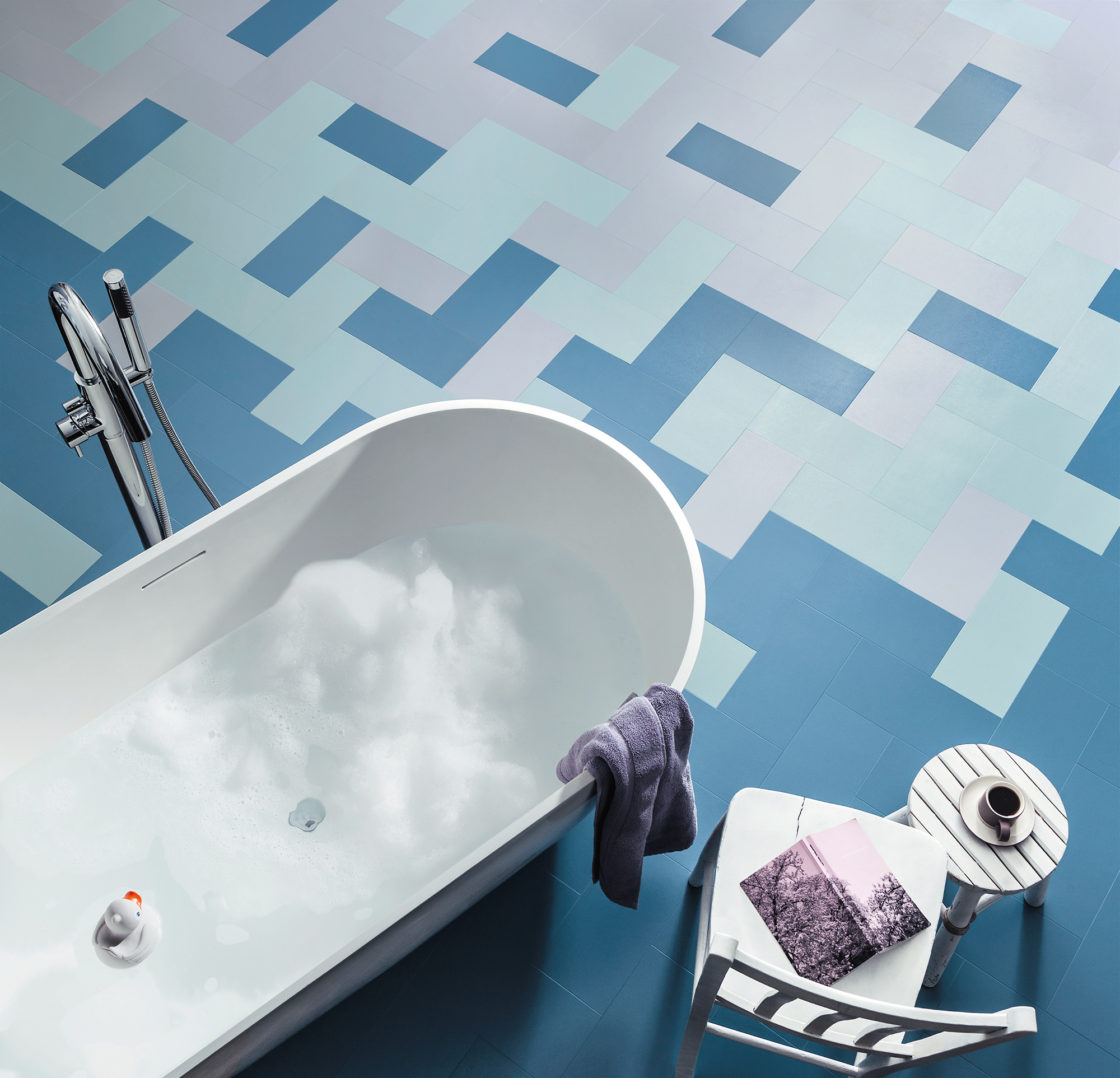
Little Bricks, £39.95 per m2, from Harvey Maria
Being a wet zone, the flooring in your bathroom needs to be slip resistant and waterproof. Glazed or shiny tiles are probably better suited to walls than floors for this very reason.
The ambience should be relaxing and, as it’s a place that gets a lot of use, being easy to mop up water is a key priority.
Vinyl, porcelain and unglazed ceramic tiles are popular, but wood isn’t completely out of the question.
Stone, slate and terracotta are porous so need sealing. Consider making patterns with tiles to create a unique finish. If you want warmth underfoot, then choose a product suitable to be paired with UFH.
Read more: Choosing Bathroom Tiles
Comfortable bedroom flooring
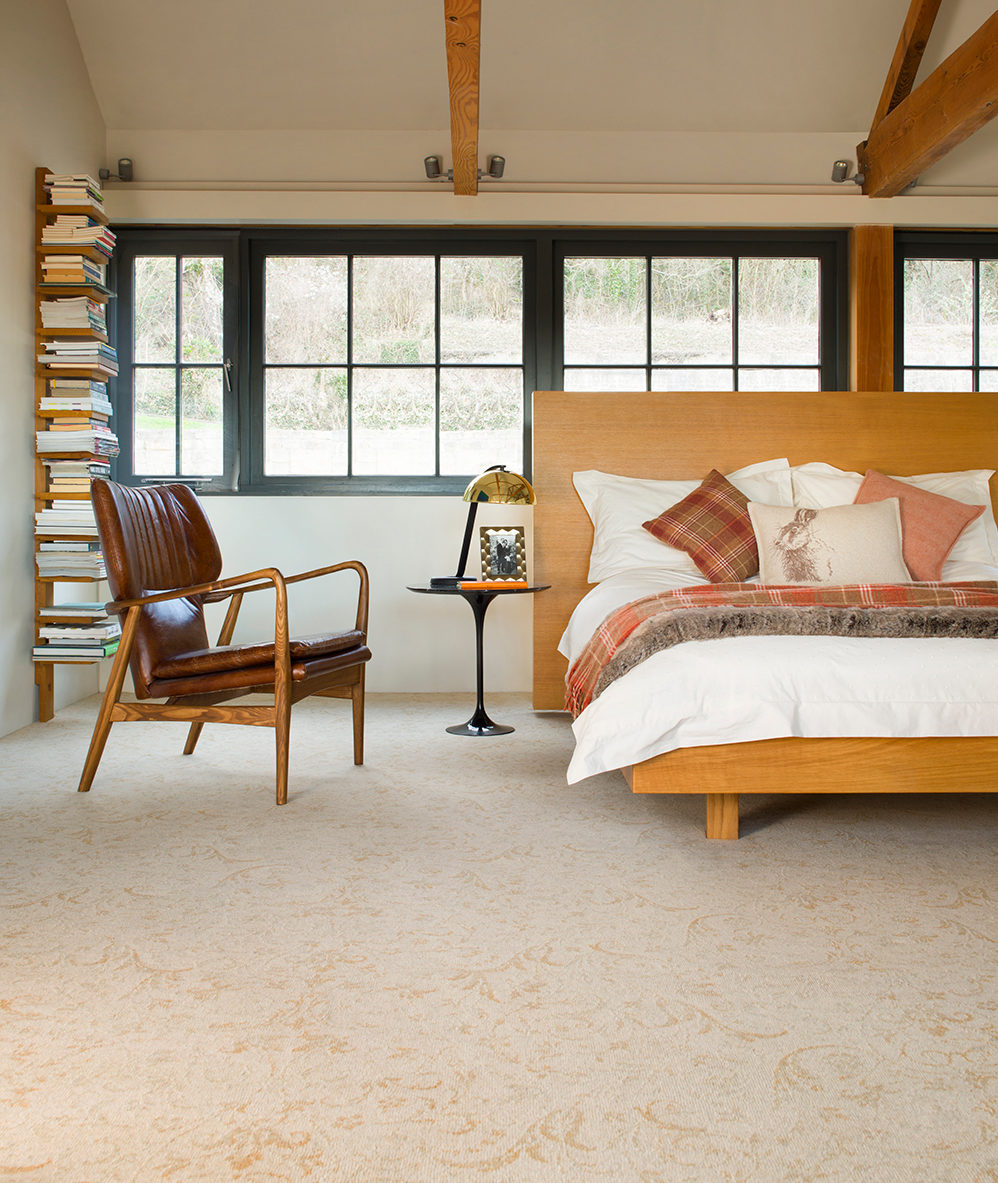
Malmaison in faded gold, £74.99 per m2, from Brintons
Your bedroom flooring needs to enhance the sense that this zone is a sanctuary for calm and effective rejuvenation, so think about comfort and cosiness.
This makes carpet a popular choice; it offers a soft and warm landing for bare feet first thing in the morning, plus its insulating capabilities help to reduce noise transfer to produce as restful an area as possible.
Solid wood is another key option; while this material is not as padded and can be noisier
to walk on, it can be softened with rugs. Its inherent natural character also helps to create a serene ambience that’s perfect for tranquillity and mindfulness.
Wood-effect vinyl and laminate are also suitable for achieving this aesthetic and can have a softer, warmer feel underfoot.
Read more: Ultimate Bedroom Design Guide
TYPES OF FLOORING
Porcelain & ceramic floor tiles
Gary Moores from Fired Earth comments on this tile option:
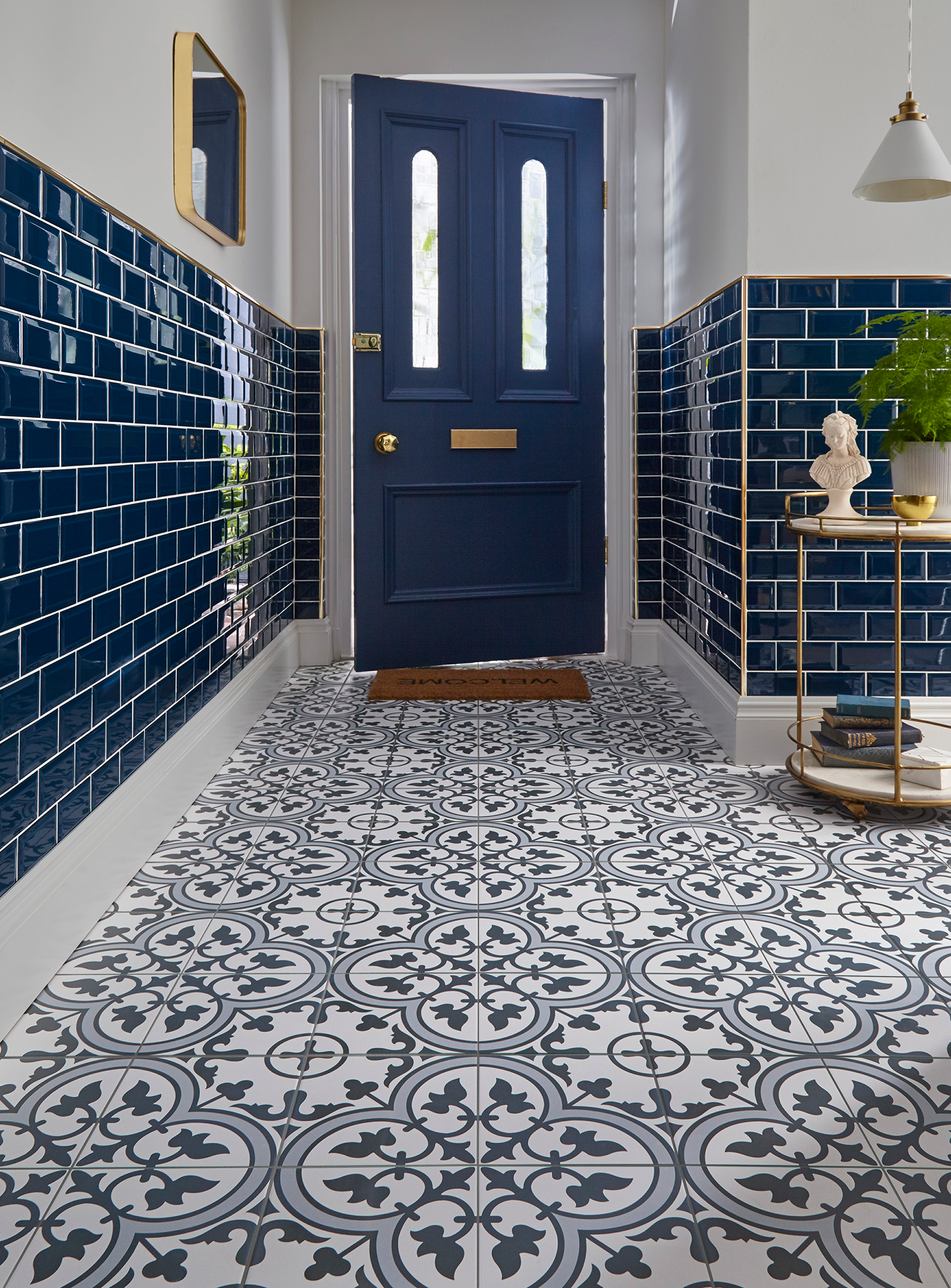
Ledbury ceramic tiles, £34.95 per m2, from Walls and Floors
What are the benefits of porcelain and ceramic?
These tiles are hard wearing and do not need to be sealed or looked after with specialist products.
A key benefit is that they’re easy to keep clean; just regular cleaning with household detergents will work wonders. They’re mostly used in kitchens and bathrooms, but work well anywhere in the home – especially as they are an efficient partner for underfloor heating.
Any tiled floor will cost more for installation in comparison to carpet, so consider the look
very carefully as it’ll be down for a long time.
What is the difference between porcelain and ceramic?
The biggest difference between the two options is the manufacturing process.
Ceramic tiles have a base material with a photograph and a glaze to finish; this is a softer product and if something heavy drops onto it then the floor could chip and expose the unprotected base.
Porcelain is the same colour all the way through; it’s fired in a kiln at an extremely high temperature, thus making it a tough product to damage.
What are the current trends for colours & style?
There are lots of looks, styles and patterns available, so porcelain and ceramic tiles offer a great deal of variety.
Grey has been the most popular colour palette in the past few years and wooden replicas continue to be on trend.
What are the typical costs for porcelain & ceramic?
As with any type of flooring, prices can vary drastically, but as a starting point expect to pay around £60 per m2 for ceramic tiles and something between £80-£120 per m2 for porcelain.
Wood flooring
Roger Hemmings from Havwoods presents the options for this flooring material:
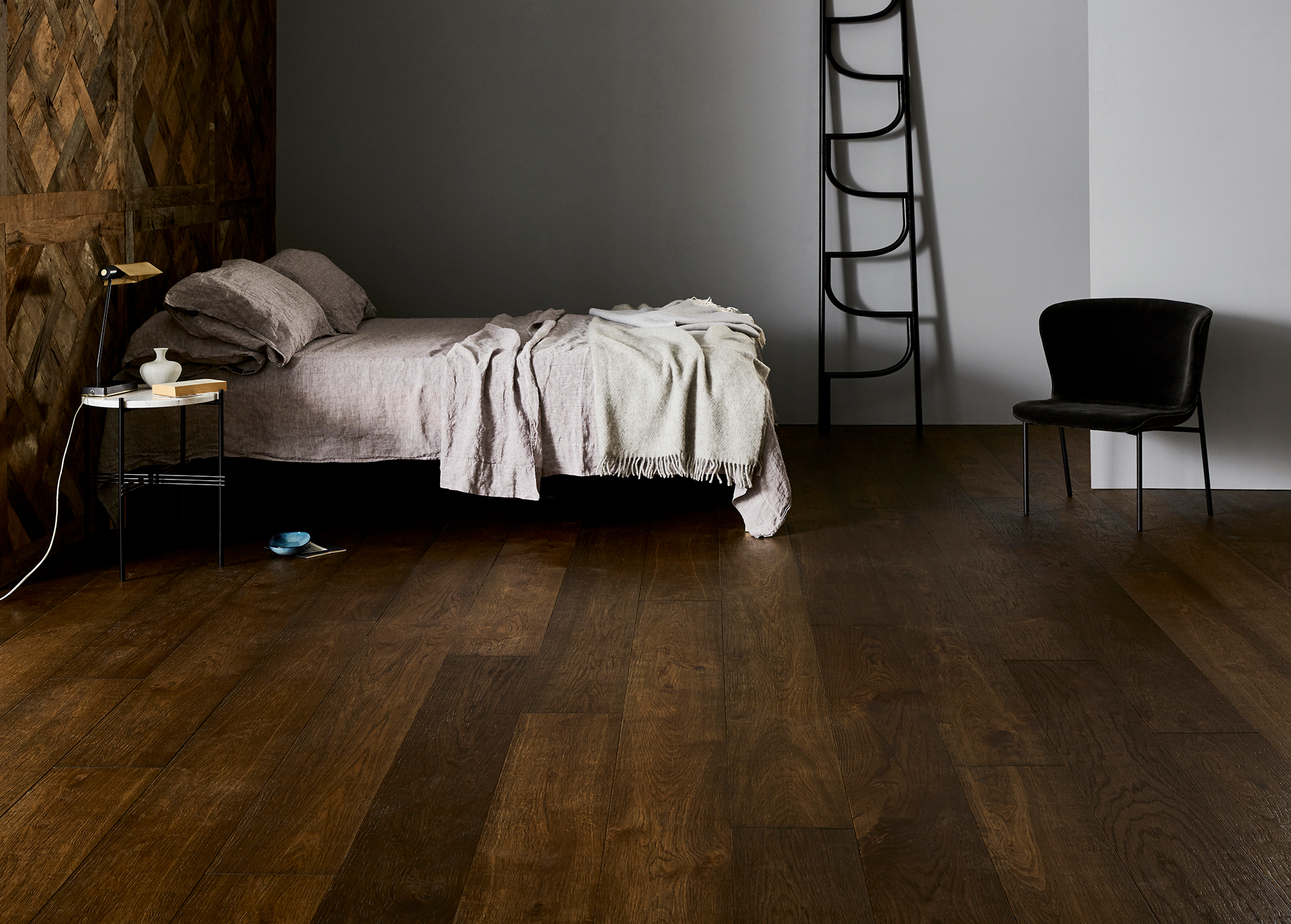
Salcey Classic slow grown European oak in burnished hardware oil finish, 220mm, from £94.27 per m2, from Ted Todd
What rooms are suited to wood flooring?
This surface is a popular and practical choice for living areas and bedrooms. Kitchens and bathrooms are not great for timber as moisture can warp, shift and buckle the boards.
Lacquered, engineered planks are a better option for these zones; however, they’re still not the most practical choice.
What are the main benefits of wood flooring?
With a huge variety of species, dimensions, finishes and textures available, these boards offer extensive design choice.
It’s not recommended to use underfloor heating with a solid wood floor, but the majority of engineered boards are suitable; this is particularly true of those with an oak top layer.
What’s the difference between engineered wood and solid wood?
An engineered wood plank is produced by bonding layers (hardwood, softwood or ply) together so the grain runs perpendicularly.
This makes it very difficult to expand/contract when wet, thus making it far more stable. Engineered planks offer quicker and consequently cheaper installation.
What maintenance is needed?
Hardwoods such as oak and walnut are a very durable and stable option for flooring.
Softwoods such as pine will easily succumb to scratches and dents, especially in high footfall areas. For floors that are susceptible to damage from heels, pets and general day-to-day use, opting for a textured wood plank will hide wear-and-tear.
Wood floors should be cleaned regularly using dry methods, such as vacuuming or dust control mops.
Applying a ready-to-use reviver solution will improve the overall surface whilst also enhancing the wear protection. Also consider rugs, entrance mats and furniture feet.
What are the typical costs?
The more processes the wood goes through before you buy it, the more it’s likely to cost, so a pre-finished engineered product is generally more expensive than an unfinished solid one – you can expect to pay from around £20 per m2.
With high-end solid wood, the price will depend on the size and grade of timber you opt for. As an example, Havwoods’ Gold Leaf solid planks range from £30.95 per m2 up to £67.95 per m2.
What advice would you offer to anyone looking to install wood flooring in their home?
Consider the area it’s going into before deciding on the best option.
Where you have a higher footfall, such as an entrance hall, you are best to look for products with a thicker wear layer.
Pets are another matter – for instance, a lively dog will scratch most wood, so in this instance we would suggest something that won’t show surface marks so easily.
Read More: Wood Flooring: Your Complete Guide to Choosing & Installing Timber Floors
Stone flooring
Louisa Morgan from Mandarin Stone presents key choices for fitting this surface:
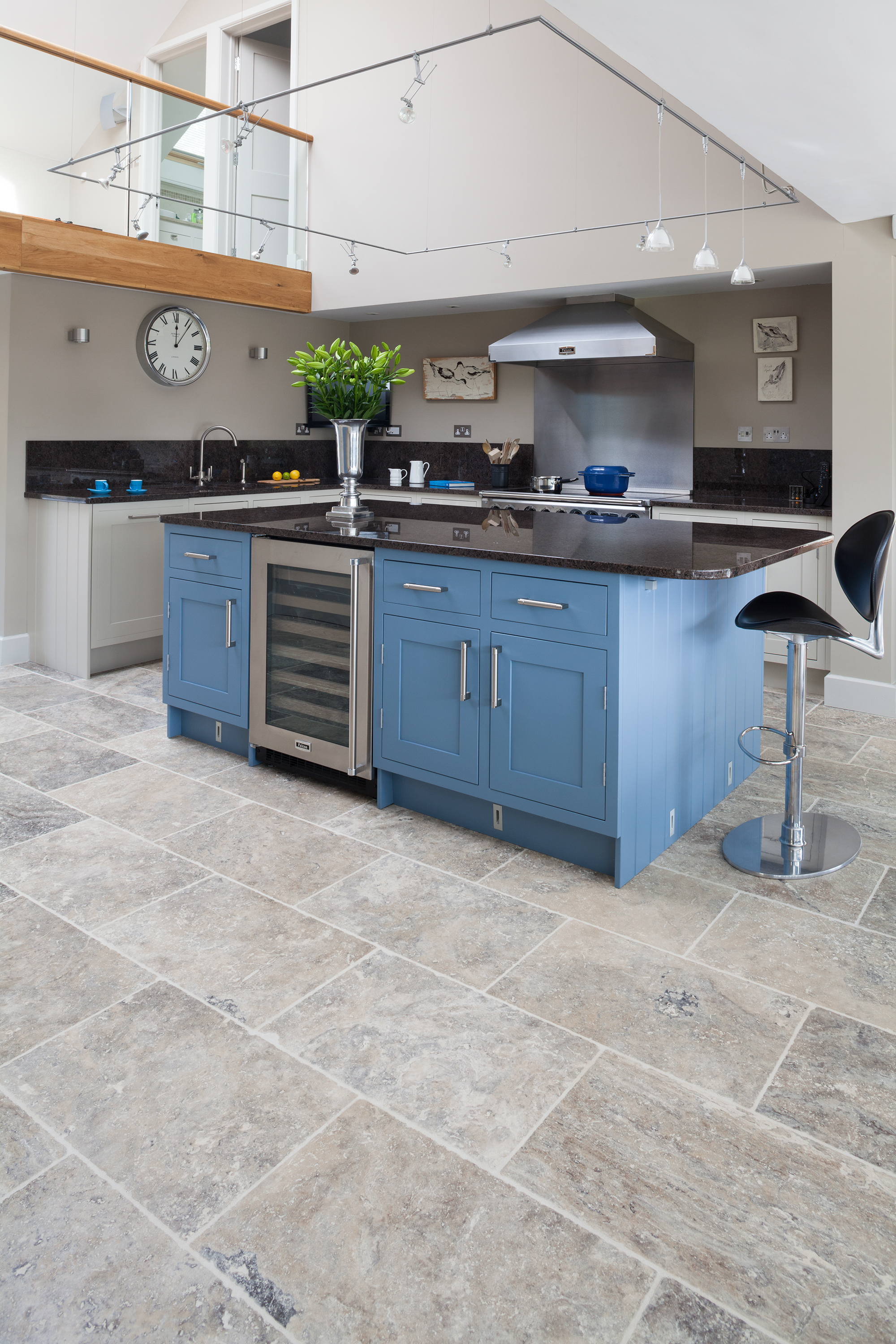
Silver Tumbled travertine tile, from £43.10 per m2, from Mandarin Stone
Which is the best room to install stone flooring?
It’s naturally durable, practical and beautiful, making it ideal for the hardest-working rooms in the house.
Given the variety of types and finishes available, this product is suitable for anything from bathrooms to living rooms.
What are the main benefits of stone?
Hard surfaces can be more practical in terms of maintenance in comparison to vinyl and carpet.
Natural stone is inherently beautiful, offering character and variation compared with man-made porcelain or ceramic tiles. Stone flooring works very well with underfloor heating, whereas not all wood does.
Pricing varies hugely – from £15 per m2 to well over £100 per m2 – but this does mean there are options to fit all budgets.
What are the key differences between popular stone materials?
Limestone offers a wide spectrum of shades (although mainly lighter tones) and is available in many finishes and formats.
Marble isn’t dissimilar but generally includes more striking veining as well as some rich and vibrant shades.
Slate tends to be darker in colour and has a more hand-finished, naturally-cleft surface. The variety of different materials and finishes means there’s something to suit any style or application.
Have you noticed any particular trends?
Larger tiles are popular, often helping to create a spacious and timeless feel. Light greys and buffs are still favoured as these shades tend to provide the most neutral backdrop.
Slightly antiqued stones in either a tumbled or brushed finish are desirable as they are neither too modern nor rustic, which is the perfect in-between look that many homeowners are after.
What about stone flooring maintenance?
All natural stone needs sealing at the point of installation to prevent it from being porous.
Routine maintenance is as simple as brushing the floor, but a more rigorous clean can be done with a neutral, stone-friendly cleaner and hot water.
Wipe up any spills as soon as they occur – if you treat it right then stone flooring should last a lifetime.
What advice would you offer to anyone looking to install stone flooring?
Choose a stone that suits your lifestyle as well as the look you’re trying to achieve.
Visit a showroom to see a larger area fitted rather than just an individual tile. Here you can check you’re happy with the level of natural variation that may occur.
Natural stone in its raw state can look dusty and unfinished, but it will look different once finished and sealed.
Luxury vinyl tiles
Mark Findlay from Harvey Maria discusses LVT flooring:
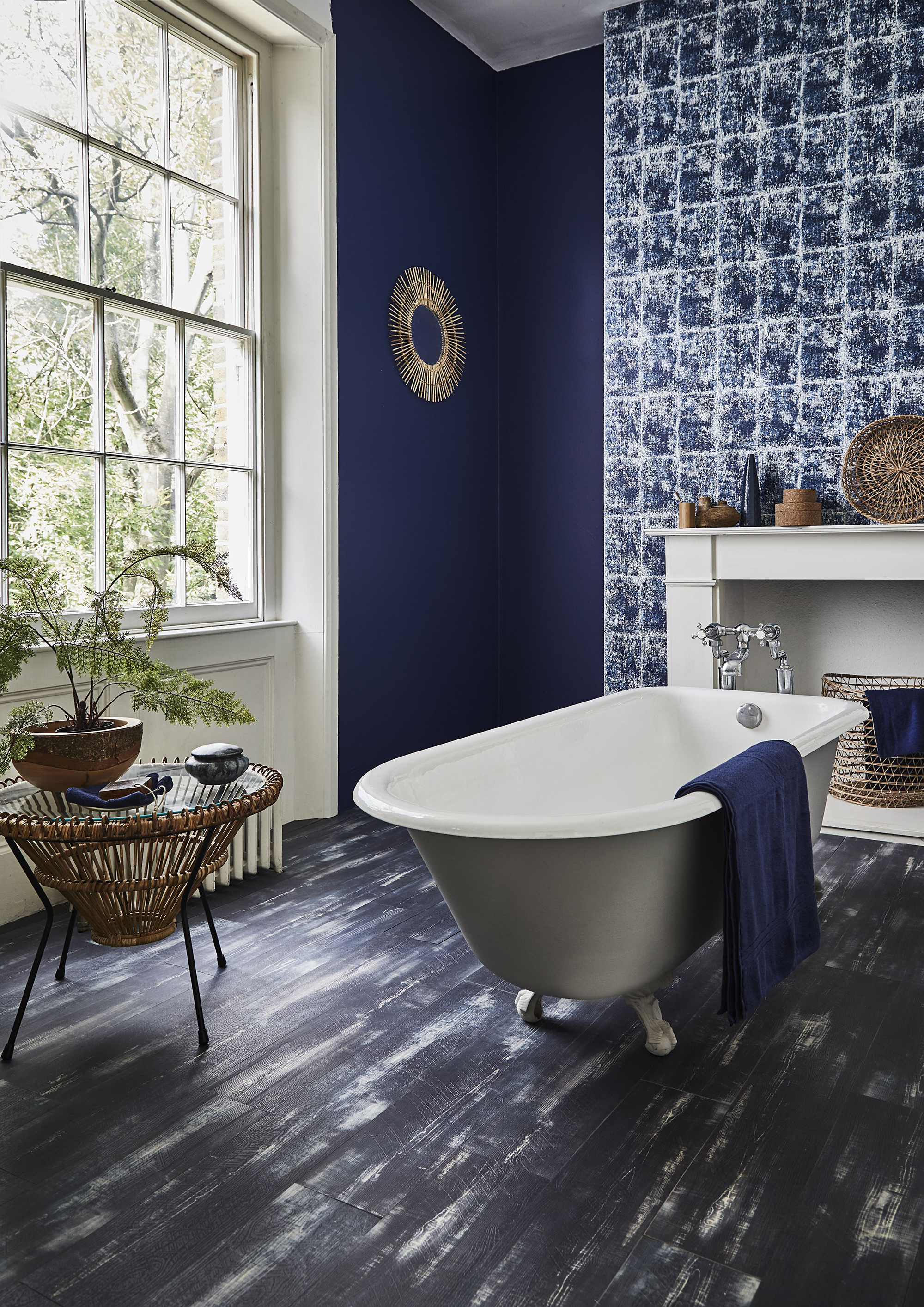
Tarkett Starfloor LVT in blue pine, £27.99 per m2, from Carpetright
Where in the home is vinyl most suited?
Luxury vinyl tiles are hardwearing and durable, comfortable and warm underfoot, slip and scratch resistant and easy to clean, plus they are available in a wide range of colours, designs and finishes.
Cheaper sheet vinyl on a roll (often referred to as lino) isn’t as strong and is only really suited to areas with lower footfall where the quality of finish and durability is less important.
LVT also works really well alongside underfloor heating, as the warmth can easily permeate through to provide a cosy and pleasant feeling underfoot.
What are the main benefits of LVT?
Extremely easy to clean and maintain, vinyl tile flooring is both highly durable and hygienic in comparison to other materials.
It’s available in a range of authentic-looking wood and stone designs that mimic its material counterpart without any of the drawbacks of the natural product – primarily they are easier to clean and require less maintenance.
Unlike other hard floor coverings such as ceramic, vinyl feels comfortable and warm underfoot as well as less slippery. LVTs are also available in a wonderful array of stunning colours as well as patterns, too.
Have you noticed any recent trends when it comes to colour & style?
In recent months it’s been popular to combine different LVT finishes to achieve a unique combination of pattern, colour, and texture.
We’ve created a collection of Premium Wood effect tiles and solid coloured Little Bricks (pictured above left) that have been specifically thought-out to work in harmony with each other.
With these units, it’s easy to create a bespoke floor design, define spaces, and create borders, for a surface that flows beautifully throughout your entire property.
What are the typical costs?
The price of vinyl can vary significantly, depending on lots of different factors, but it’s generally true that – in terms of quality – you really do get what you pay for; for instance, Harvey Maria’s LVT prices start at £33 per m2.
Cheaper sheet vinyl will be much more flexible, meaning it’s more likely to be susceptible to being damaged over time.
Beware of fitting lower priced products – the cost of replacement can often be considerable and this is not something that you will want to be doing too often.
What advice would you offer to homeowners thinking of installing LVT?
It’s important to lay down a suitable subfloor (plywood or a smoothing compound) to ensure the surface is smooth and flat, plus its absorbent so will allow the adhesive to bond properly.
Depending on a number of factors (the material and condition of the existing floor, whether you can add any extra height etc) it may be possible to fit the subfloor on top of your current flooring.
However, you might find that removing the existing covering is a better option for your space.
Carpet flooring
Natalie Littlehales from Brintons shares her top tips for choosing carpet:
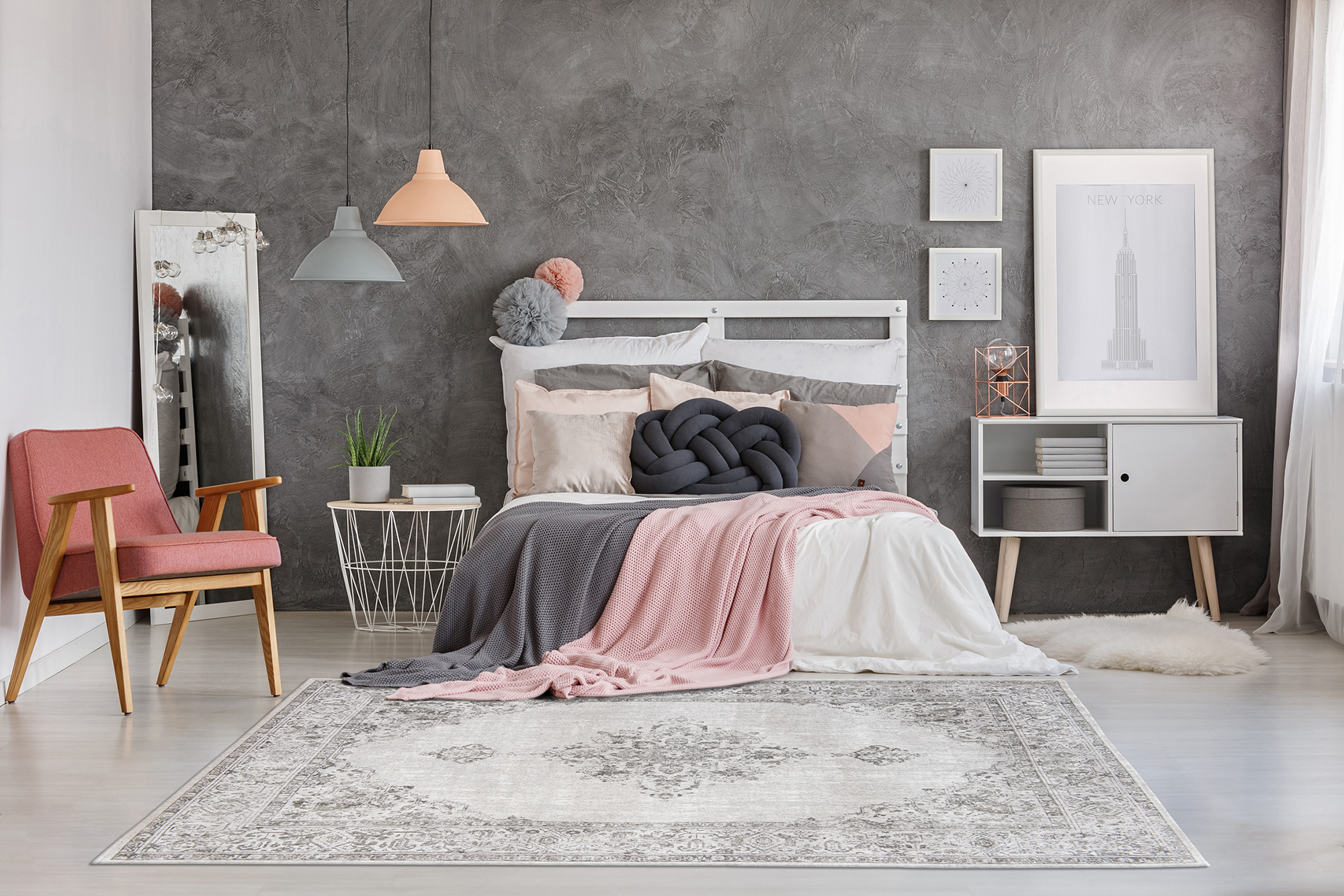
Khayma Fairfield Pale Grey Rug, £310, from Modern Rugs
Where in the home is carpet most suited?
Softness underfoot is what makes carpet so popular in bedrooms, but also living rooms, dining areas and hallways.
Brintons’ pioneered the 80% wool 20% nylon blend that is now used throughout the entire industry, which provides the softness of wool with the hardwearing robustness of nylon.
There are a wide variety of colours and patterns out there meaning you can change the look of each room.
What are the main benefits of carpet?
Wool provides comfort underfoot at the same time as helping to insulate your home and reduce energy bills as a result.
It absorbs sound to give a sense of calm and tranquillity and is naturally fire resistant, too. The protective and natural waxy coating that’s on wool fibres keeps it protected against staining; these carpets will also pick up less dust as they’re naturally anti-static.
Natural wool is easily recyclable and biodegradable, plus shearing is essential for the welfare of sheep, making it a fantastic sustainable choice for flooring.
Have you noticed any recent trends when it comes to colours & style?
Expect to see grey carpets paired with colourful walls and furniture. This hue is sophisticated, constructed of various shades and undertones.
It is not only a wonderful companion to other neutral shades, but also has the power to balance out bold accents creating a calming backdrop for colour, adding texture and introducing natural, tactile materials to your scheme. It will add interest and break up any colour blocks.
What maintenance is needed?
All types of flooring get dirty, although some show soiling more than others. Because of the nature of the fibre in wool rich carpets, they generally hide soiling better than synthetic products and will be easier to clean.
Vacuuming is the most important thing you can do to keep your carpet neat – you cannot overdo it!
The amount of short fibre removed from the carpet in the first few weeks after installation can look very dramatic, but it is in reality only a very small proportion of the pile weight and will in no way affect performance.
It’s a good idea to use small mats or an offcut of your new carpet in kitchen doorways, or in other areas where the soft covering is next to a hard floor, to prevent greasy spots spreading to
the carpet; the same is true with external doors.
What advice would you offer to anyone considering carpet?
Dark flooring works best for rooms with lots of natural light, making the space appear larger and brighter – they’re ideal for high traffic areas, too, as they conceal dirt and marks.
To uplift and brighten the decor of a smaller room with less daylight, pair darker walls with earthy or cream shades.
The texture of carpet adds another dimension to a room, as well as offering extreme comfort underfoot and being a great insulator.
Flooring cost guide
The figures given here are based on the installation of 20m2 of flooring in a new build home, and include all labour and materials (including adhesive, sealant, threshold bars and beading), as well as assumptions on breakage and wastage.
They do not account for renovation-related work, such as skirting alterations or the use of levelling compounds. We have assumed a mid-quality option in each flooring category to try to account for the many variables between different products and suppliers.
| Flooring type | Flooring cost per m2 | Flooring-only cost (20m2) | Additional materials costs | Labour cost | Total flooring cost |
|---|---|---|---|---|---|
| Natural stone tiling | £25 | £500 | £765.60 | £854.33 | £2,119.93 |
| Porcelain tiling | £20 | £400 | £596.54 | £809.33 | £1,805.87 |
| Solid wood | £45 | £900 | £339.06 | £345.33 | £1,584.39 |
| Engineered wood | £30 | £600 | £239.12 | £345.33 | £1,184.45 |
| Wood effect laminate | £20 | £400 | £186.82 | £345.33 | £932.15 |
| Vinyl | £20 | £400 | £467.48 | £164.53 | £1,032.01 |
| Carpet | £15 | £300 | £175.47 | £136.63 | £612.11 |
These indicative prices exclude VAT and builder’s profit. Self build projects qualify for zero-rated VAT on labour and materials (the latter will be reclaimed on completion).
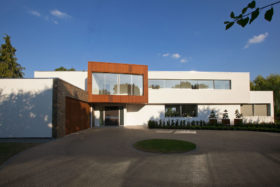































































































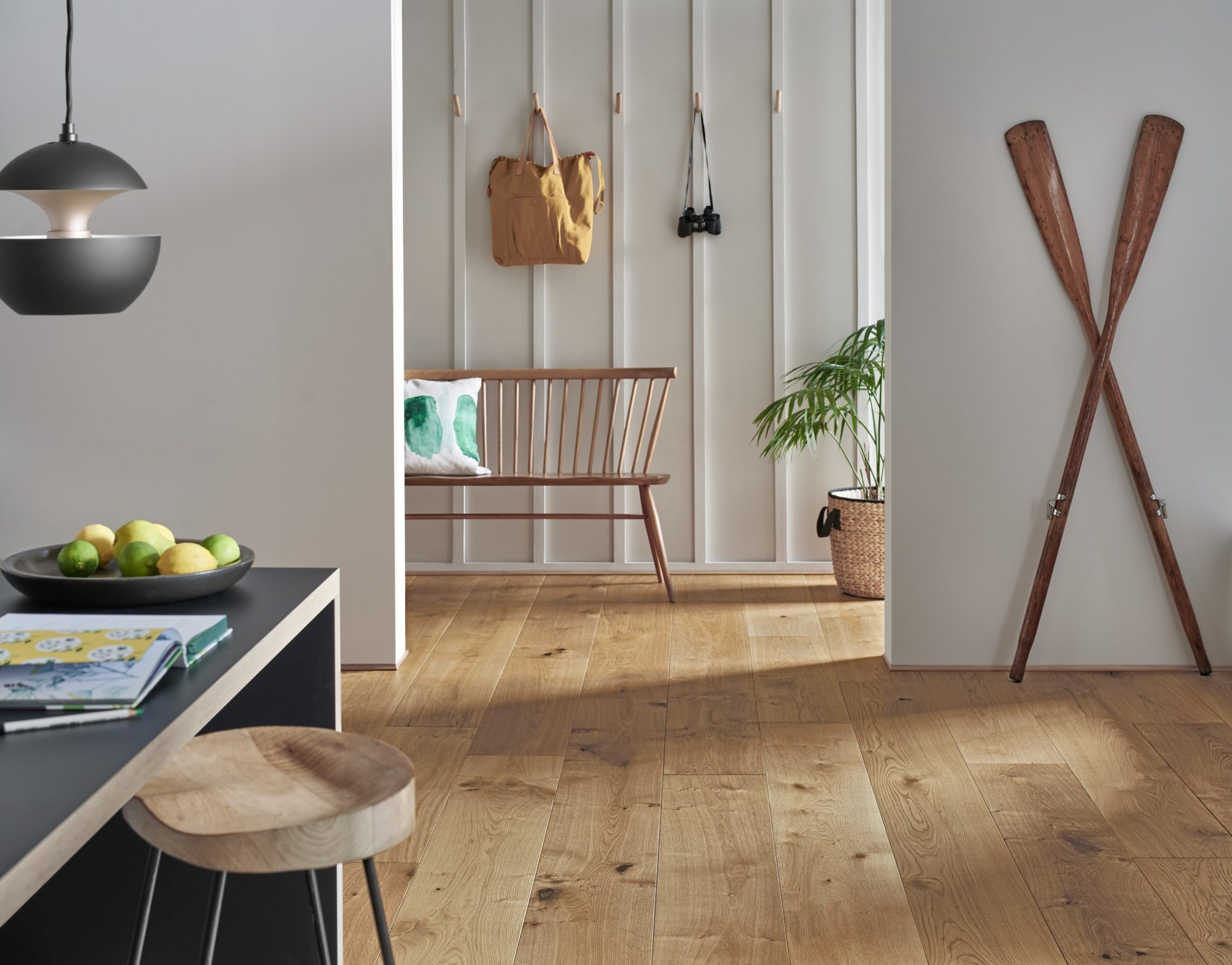
 Login/register to save Article for later
Login/register to save Article for later

